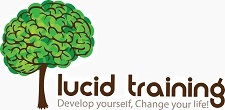PATTERNS:
THE GOOD, THE BAD, AND THE UGLY
Your brain essentially operates as a pattern-detection machine. To make sense of the world, you look for, and you create, patterns. It’s what the brain does. And it is very efficient in this skill of pattern-detection and pattern-creation. That’s why a child who grows up in a home where two or three different languages are spoken—somehow—sorts them out and eventually learns to speak two or three different languages. Amazing!
Actually, your brain and my brain is much better at pattern creation than it is at pattern detection. That’s why we are all inevitably by nature born creative. Because of the amount of information that we encounter, we have to order it, organize it, and structure it so that we’re not overwhelmed and can function. That’s why we are so quick to “jump to conclusions” and construct a pattern even when there’s no pattern or when we really do not have enough information to legitimately say that a given activity is a pattern. As children we were so very quick to jump to conclusions.
We are also very quick to over-generalize, to mind-read, to label, etc. These distinctions of the NLP Meta-Model of Language reveal that deep within us is an essential tendency to engage in pattern-creation. These cognitive distortions tell the story of our cognitive development— the mental-emotional stages that we go through as we develop into mature adults. This is good, this is bad, and this is ugly.
It is good because by detecting and creating patterns, we create knowledge and science. The key, of course, is first to detect patterns which requires the ability to delay pattern-creation. It requires that we slow down our naming of things, categorizing (classifying), and judging so that we gather sufficient information and truly detect the way an experience works over time consistently. Otherwise we may be jumping the gun and calling something a pattern that is not actually a patterned way that something operates.
It is good because now we can detect the structure (or structuring) of things and discover how things work and how we can put them to good use. When we do this with people, we can figure out how human nature works, the actual patterns that explain what people are doing and why they are doing what they’re doing. When we do this with business, we can figure out how the market works, how to determine what products or services are needed, when, by whom, etc. When we do this about wealth, we can figure out what wealth truly is, how it works, how to become wealthy, etc. So also with health, vitality, fitness, relationships, parenting, loving, leading, and a thousand other activities.
It is bad to the extent that we are creating non-existing patterns and treating them as real and reacting to them as solid or inevitable. This is what happens if we do not grow out of the childish thinking patterns (the cognitive distortions), test them with the Meta-Model questions, and learn more adult critical thinking skills. What’s bad about this is that we create all sorts of unnecessary misery for ourselves and others when we mind-read, over-generalize, personalize, awfulize, label, etc. Years ago Albert Ellis, one of the leading psychologists who identified the cognitive distortions, along with Aaron Beck, wrote a book with the title— How to Make Yourself Miserable— I mean Really Miserable! It was a book about the misery that results from the cognitive distortions.
That is a miserable way to live. And that explains part of the transformative power of the Meta-Model— by challenging the ill-formed structure of our thinking-emoting, the Meta-Model questions enables us, as adults, to keep updating our mental maps which allows our thinking-and-emoting to grow up and become more mature. In terms of attaining to truly creative and critical thinking, it is a great tool.
But things go from bad to ugly when you do not effectively manage your pattern detection and creation skills. Consider this. What happens when you find a pattern? What happens when you detect a pattern and/or create a pattern? This is where things can get ugly. You stop thinking. You now use the pattern for “understanding” and “knowing” what things are and now you just react from your pattern.
Wow! If that’s the case, you better be sure that you have accurately detected and/or created a useful pattern. If not, you are really setting yourself up for not being able to navigate life very effectively and you may have established a pattern that is self-destructive, counter-productive, and dysfunctional for you and others.
Because patterns control attention, your attention is a function of the patterns that you have learned and created and detected over the years of your life. How well are they working? How productive are you? How effective in the domains of life wherein you want to succeed? The problems that you have are never “personal” problems, you are just fine as a human being. You are unconditionally valuable as a person. The problem is always the frame— the pattern.
Now you know why we say that over and over and over in Neuro-Semantics.
The person is never the problem; the problem is always the frame— the pattern.
For a humorous look at the difference between map and territory:

